Megan Comfort’s work focuses on incarceration, family, intimacy, and public health. We speak with her about her 2008 book, Doing Time Together: Love and Family in the Shadow of the Prison, the outcome of an ethnographic study at San Quentin Prison, and how intimate relationships are sustained even when one partner is behind bars. To listen to the full interview on the Office Hours podcast, click here.
Sarah Lageson: What drew you to the topic of women who are romantically involved with men who are incarcerated?
Megan Comfort: When I first got out of college I just had a regular job—didn’t head straight to grad school. I started working at the visiting center at California’s San Quentin state prison. the prisons in California are legally mandated to have a center to help visitors who are coming, providing some basic services that people need when they come to the prison to visit. So I worked there and also in a health program providing HIV education for women visitors. I went from there to grad school in sociology, carrying that experience with me when I was thinking about my dissertation. And I’ll be honest, it actually took a while for it to dawn on me, but this was really a compelling subject—like a lot of people, I had been focused on the people who themselves were incarcerated. Even when I first got the job at San Quentin, I kept thinking of this a sort of a stepping-stone to working inside the prison with prisoners. But it took the two years that I was working there and even into grad school before I started having the chance to read more of the literature and realizing there was nothing (or very, very little) written on the families and loved ones of prisoners.
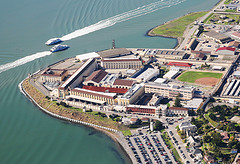
SL: When it comes to the visits between these loved ones and the prisoners, let’s start with the physical process. Can you talk about “the tube”?
MC: Both the corrections officers and the visitors call this area “the tube” because it’s just a long concrete corridor with a door on either end. A door in the middle leads into what they call the processing area, which is the first step of going in for a visit into the prison. Once you go through that door, IDs are checked and dress code is verified and all of those kinds of things. So the tube is this kind of waiting zone: a long, concrete corridor with wooden benches and a door on either side (much of the time, the hinges on these doors were broken, so people would prop them open, so the tube was really windy). Overall just a very uncomfortable, bare space where women end up spending a ton of time, especially on the weekends or at peak visiting hours. So that was a huge part of my observations: watching the experience of the people who stand in this corridor or sit on these hard wooden benches sometimes, truly, for hours to visit their loved one.
SL: You also interviewed women about keeping in touch when they weren’t visiting. There are letters and packages, which are very labor intensive projects, and phone calls which are very expensive, but I was really curious about this phenomenon you call “presence creation”—can you explain that one?
MC: Presence creation came up in many different forms. And it is much more of an informal thing, which is why I had to give it a name myself. But it’s really the idea of women trying to create someone’s presence in one way or another, and sometimes the men are able to reciprocate as well. One of the clearest examples is San Quentin has an internal television channel, and people know in advance what movies they are going to be showing on SQTV (San Quentin Television). So men could find out, “Oh they’re going to show Rocky IV on Friday at 7:00,” and women could go out and rent that movie and then simultaneously watch it in their own homes while they knew their partner was watching it in his cell. They created each others’ presence. People would also try to do things like eat the same foods at the same time, or several women I knew had photos they would bring around with them. In the book, I describe eating lunch with somebody and she puts a photo of her husband on the table with us so, you know, “he could eat with us.” So this idea of really trying to bring someone into your life, even when he’s physically being kept away from you.
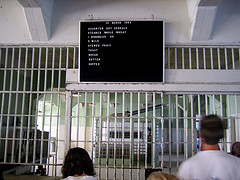
SL: It’s also interesting to think about the ways the prison itself seeps into personal lives, often through food. Food is such a central concept in your research, but why is it so important to these women?
MC: Food was a great one because it wasn’t something I had thought that much about before hand. So, you know, when you’re in the field, you get to see things in a different way; I just noticed over time people were talking about food all the time. There is an amazing literature on the primacy of food and food in terms of family. A lot of times that’s how we show a bond with someone—we prepare food, share food, we feed people quite literally. And I think when people and forced to be apart, something like food—very tangible, very primal—assumes a huge importance. It is also something, unlike so many other things that prisoners do not have access to, they at least do eat every day. At a minimum, if you wanted to synchronize meals. you could do that. In the context of visiting, there are vending machines, people can eat together, and in the contexts of the packages, women were able to send in food. So it was kind of this element that could be shared and rituals could be built around. I saw partners forging it into a shared existence.
SL: In your book, you start with what’s common among the women you’re observing, then you begin to divide them into three broad categories, with case examples at the beginning of each section. Let’s walk through those rich stories. The first group was women who actually met a man who was already in prison and reamined in prison for the entirety of their relationship.
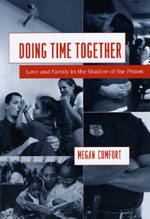
MC: The categories themselves, as I say in the book, are pretty loosely defined and I can imagine women moving from one to another over time. That said, this first one was a little more distinct in that these women met the men after they were already incarcerated. For the most part, the men were serving life sentences or were on death row at San Quentin. So women came into the prisons, sometimes in a volunteer capacity or introduced by a mutual friend or a mutual relative. Quite often the men had already been incarcerated for several years by the time the women came into their lives.
Because the women tended to meet the men under circumstances that, as I say, a lot of times involved program-related service to the prison, they were already, for one, higher resource women who could volunteer their time and then also social justice-minded or it was organized religion that brought them to the men (sometimes people developed pen pal relationships, again, through some sort of religious affiliation). So a lot of times women would explain their relationships with the men as being connected to principles of social justice or religious faith and ideas of redemption. They tended to speak about their relationships a lot in these terms; they really saw strong meaning in their relationships.
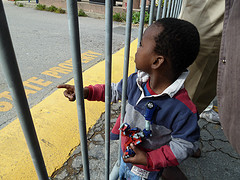
MC: This is what we really see when we talk about incarceration in America. So people who are serving long sentences and who are on death row are very important members of the carceral population, and we need to play attention to them, but they are a relatively small group. There is a much larger group of people who were cycling in and out, going into facilities and back home on a regular basis. The women partnered with these men were really interesting in that they were really politically and socially savvy and astute, often offering very sharp and critical discussions of the criminal justice system, of racism in policing, in sentencing disparities, and all sorts of reasons why primarily low-income people of color end up behind bars. And what came forth in my analysis then is that this shaped a lot of women’s responses to their partner’s incarceration. They’re not seeing his incarceration as a personal shortcoming. They’re seeing it in the way sociologists see it: there certain policing strategies that are happening, there are certain legal issues that are coming up, and these men don’t really stand a chance to stay out. This group of women had a very astute understanding of a lot of that.
SL: Can you tell where that point of view emerged?
MC: I would say a lot of women have been experiencing this very, very personally for a long time. So these are women whose fathers were incarcerated, whose brothers wound up incarcerated, and once again I think this is what helps them see that imprisonment is often not one person’s shortcoming: “This is happening to 80% of the men I know.” They all had stories of being in the wrong place at the wrong time or the parole violation for something that really was nothing. And so, as I say, they’ve experienced this over time with relatives, maybe with other men they’ve been in relationships with, and have now gone on to experiencing it with their sons. Sharing their stories among themselves really creates this understanding and worldview this group shares.
SL: Can you describe your third broad category of women in relationships with men behind bars?
MC: In this group, we really got to the point of women who were very impoverished, who had very few resources. They’re kind of the opposite of the first group I was talking about. They were in need of services that no longer existed, had been massively cut back, or for which they weren’t considered eligible, and they got into these cycles where the incarceration of their partner could sometimes provide relief around various problems. This was often linked to men’s substance abuse issues that were going untreated when he wasn’t incarcerated, men who became abusive, men with mental health issues. So these women were unable to find or connect their partners with services that would be more therapeutic, and things would escalate to the point that when he was eventually arrested and incarcerated it provided a bit of relief in the household. Again, these women are in love with their partners, so there was still longing—this wasn’t the best solution possible. Now they have to go visit him in a prison, which is not something they particularly enjoy.
SL: How comfortable were people in the second and third groups talking about domestic violence with you?
MC: It varied. Some alluded to abuse, but did not speak directly about it, some felt more comfortable talking about previous relationships rather than a current relationship, and other people were quite honest about either their partner’s abusive behavior or their own violent behavior—either in self-defense or because of their own substance abuse or mental health issues
I met Erica during my previous work and we stayed in touch. She was very proactive about getting in touch with me and liked to call me up and tell me how things were going, and so I saw her through multiple cycles of her partner’s incarceration and release. Her story is really rich; she had a lot to say and had a lot of her own analytical perspective. But she had a partner who definitely had a lot of unmet needs and he was incarcerated. She was a very resourceful, very resilient woman so she managed on her own to secure pretty steady jobs, get herself a car, go to her AA meetings and really pull her life together. And then when he came out, her partner was a very destabilizing influence and would usually return to his own tendencies very quickly, he would start selling her possessions and disturbing the household in various ways. Usually she’d lose the car, which meant she’d lose the job, and things would really spiral out of control and come to involve violence (between the two of them, he seemed to be more violent, but she acknowledged her own violence in the relationship).
SL: For women in the first group, the draw of the relationships is sort of this “reformed, sensitive, ideal partner.” Women in the second group have a zoomed-out, sociological, analytical reasoning about patterns of incarceration and reincarceration. Did the women in the third group have sort of an explanatory mechanism like the other two groups? Or was it just sort of the reliance on the system to help them?
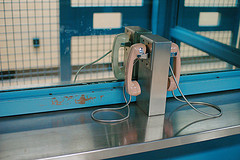
MC: In terms of a bigger picture, I think these women focused on survival. Again, I studied women who were making a tremendous effort to come to the prison to visit somebody, so it’s not surprising this would cross all groups, but women are just in love with these men. To a large extent, in the second group and the third group there is also this social fact that women don’t necessarily have a lot of choice to be involved with men who aren’t going in and out of prison. Erica had other suitors, but she was like, “You know, I’ve been with this man for a long time, I know his patterns, we know each other, so I’d rather stick with somebody I’m actually in love with instead of somebody else who could be very unpredictable and who is also, very likely, going in and out of prison. Why shift to that when I actually love this man?”
SL: You really connect all of these points to this idea of “secondary prisonalization.”
MC: I realized, through all of this analysis, that prison is really seeping out of its boundaries and entering women’s homes as the women are entering the prison and spending time in there. The women are being transformed by the correctional institution. I call that “secondary prisonalization.” Women change the way they talk, behave, and dress; synchronize their meals when partners are eating; and watch certain movies. All of that is a transformation of women’s selves based on incarceration of their partners.
Secondary prisonalization shows how we really need to be looking beyond the individual to understand the societal repercussions of incarceration. My hope is to contribute to a growing body of work looking at the full spectrum of incarceration as it affects people at all levels, whether they are the targets of the criminal justice intervention or not.

Comments 3
Elizabeth Leenheer — February 15, 2013
Great article! My brother is in prison and I can say that his crime, incarceration and all that goes with it has profoundly changed my life. I wish more people, especially policy makers realized the ripple effects sending someone to prison has. Looking forward to reading the book. Thank you.
Virginia Schofield — October 24, 2017
I have been iving this life with my loved one for the last five years. It helps me when I read about others in same circumstance. I am category 2. in and out of prison twice now in less than 3 years. Yes, i see the political implications and it is astounding that it goes unnoticed in the national consciousness. Language is powerful and I consider my incarcerated loved one a hostage, being held by the carceral money making industry. i can't wait for him to come home and be a prison survivor.